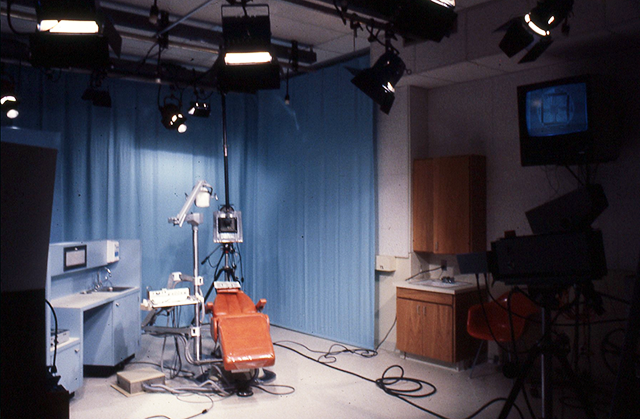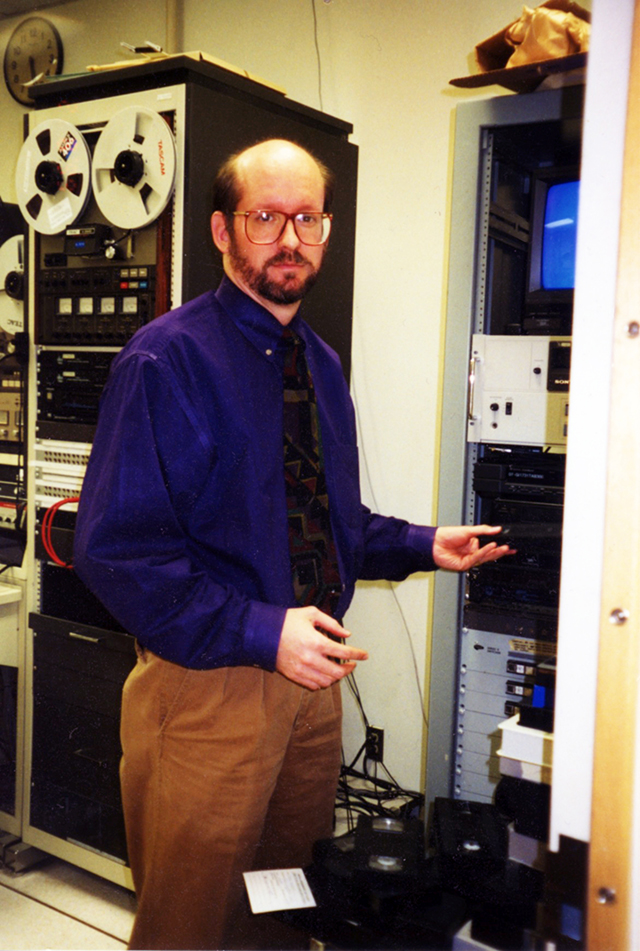From analog to digital, and everything in between

 After 30 years, Frederick retires from TAMBCD
After 30 years, Frederick retires from TAMBCD
When Scott Frederick joined the dental school staff as an audiovisual production specialist in December 1984, the creation of 35 mm slide programs with narration was his forte. Needless to say, not a single one was digital in those days.
“I was doing everything with analog tape and slides; there was a lot less flexibility about how you could create and change things once they were done,” says Frederick. “The biggest change is the digital realm that everything has gone to now, and it’s not just in my industry. It’s across the board.”
He tilts one slide toward the fluorescent lights lining his office ceiling. The image: an empty operatory, flanked by a velvet blue drape. All that’s needed to complete a procedure are the dental faculty, students and a patient. This clinic-like scene, however, is in an unlikely location: the photo studio on the college’s fifth floor.
“We used to do all of our filmed procedures in the studio,” Frederick recalls. The mechanism has changed over the years, with the transition to hardwired cables, allowing video feed to transmit from the college’s oral and maxillofacial surgery clinic straight to the sixth floor lecture hall during continuing education courses.
“It’s just been in the past few years that we’ve really been able to take advantage of the network infrastructure, where we can broadcast to any room in the school, and through the webcasting, we can send that outside the building,” he says.

The day is Nov. 30, and Frederick, director of Media Resources, has just started his last workday at Texas A&M University Baylor College of Dentistry. It’s nearly 31 years to the day since he was hired for what was then the educational services office.
Beyond video production, Frederick’s responsibilities at the college have encompassed everything from webcast coordination and filming the college’s longstanding “Dental Health Check” news segment on Channel 8 to classroom support and creation of marketing collateral.

Frederick could be relied on to perform these tasks in a “flexible, calm, level-headed manner,” Dr. Charles Berry, associate dean for academic affairs, told staff and faculty during a retirement reception on Frederick’s last day at TAMBCD.
The ability to help faculty share the latest in dental advances through media is one of the reasons Frederick has stayed at the dental school for the majority of his career.
“It was always great to be able to help document a case that was special so that it could be used to teach the students or to carry to meetings to spread what they were doing to other people,” says Frederick. “This has been a really great place to work. It’s about the people, like any job is.”